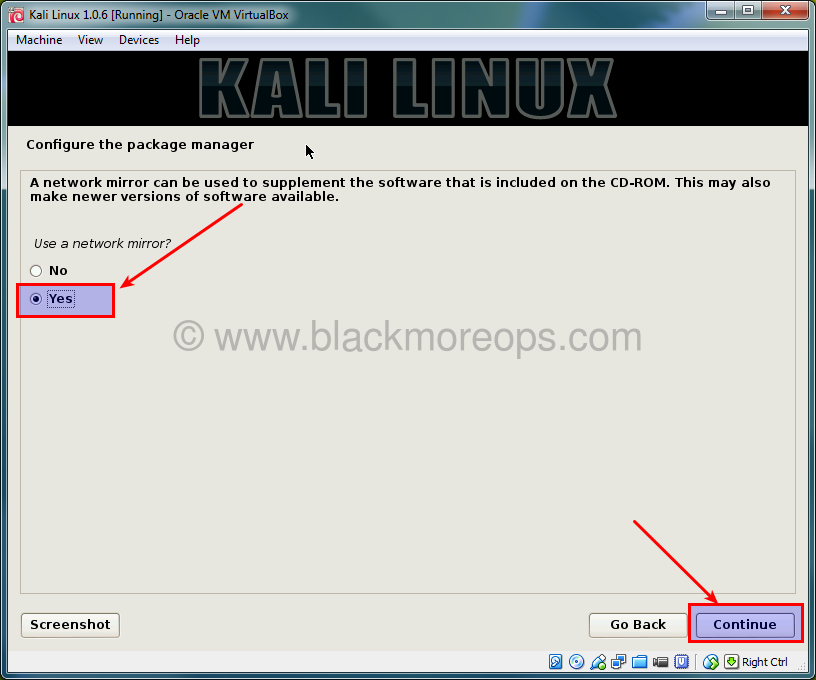
Grub Installation Failed Kali Linux Install On Virtualbox
• Kali will now start installing and writing changes to disk. The process can take at most 30 minutes. • Once Kali Linux installation is complete, it’ll ask if you for a network mirror. Select No and press Continue. • In next window, it’ll ask if you’d like to install the GRUB Boot Loader. Click yes and then again, press continue.
We're nearly done. If you haven't checked out previous tutorials, I'd recommend you do so first before diving right into this one.
While macOS is a powerful -compliant operating system, some of our Linux tools do not work out of the box on it. In some cases, they can be made to run with a little bit of elbow grease. In other cases, there's a lot of work involved. And then there are those tools that simply won't work at all in macOS.
For example, anything involving the, or many of the common hacking tools for wireless networks. With a bit of know-how, you maybe able to port a tool that you want, but that's a long process and more of a side project. When we need tools, we need to be able to run them right away.

Previously: Since you will generally be working with a deadline and can't stop your current project, I recommend a Kali Linux virtual machine as part of your macOS toolkit. Download dragon ball z burst limit ps3 iso games torrent. Kali comes with a large collection of pentesting tools preinstalled, and it's simple to set up.
If you're a pentester or regular Null Byte user, you're probably well familiar with it already—a great deal of the tutorials here on Null Byte use Kali. In these steps, I will show you how to get a VM up and running on macOS. If you dislike running in a VM for whatever reason, there are many computers that will run Kali well enough that can be purchased for very reasonable prices, or you can just boot from a USB stick. You can also install Kali on your Mac's hard disk as another partition. Step 1: Install VirtualBox In order to run Kali, we will need some virtualization software first. While there are many options to choose from, such as those from VMware, I like to use Oracle's VirtualBox, which for free.
This is what I'll be using in this guide. Don't Miss: When the file finishes downloading, mount the disk image when it appears, then double-click on the VirtualBox.pkg within. Once the installer has finished, launch VirtualBox from your Applications folder. Step 2: Download Kali Kali images are located on, so you can download the one that best suits your needs from there. Kali also offers preinstalled VM images, including ones specifically for VirtualBox. All you would do for those is download one, then double-click on the file to open it in VirtualBox, then follow the on-screen instructions to import everything in.
While the preinstalled images are super easy to install, and take no time at all to get up and running (though you will probably have to also install the to get USB working), the ISO image will allow you more options in the configuration. Personally, I prefer the XFCE image because I like a lighter desktop environment. This means that I will be installing the machine from scratch, which I'll run through below.
The default image is Gnome, which is a great environment, but it's a little heavier on system resources. Now we are presented with a choice for the guest machine's hard disk size with some options.
• Do not add a virtual hard disk: This allows us to run Kali Linux in live mode, essentially emulating a machine with no attached hard disk. This is the equivalent of booting Kali from a USB stick.
Changes made to the file system will not persist. • Create a virtual hard disk now: This allows us to create a fresh hard disk that we can install Kali Linux to. I prefer to have a virtual hard disk so that my updates are saved to the system, and so that I can store information that I've gathered about my targets on the OS. For example, Metasploit uses a database to keep track of credentials, etc. • Use an existing virtual hard disk file: This is if you want to load an already created hard disk. For example, if we already had a Kali Linux hard disk image, we could load it here.
Running in live mode is acceptable, but in some cases, you will be working on files on the VM and you want persistence. This is why I opted to create a virtual hard disk. Once you are satisfied with your option, click the 'Create' button.